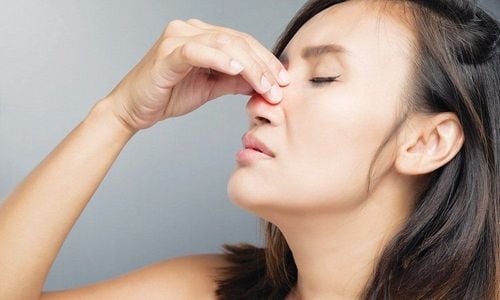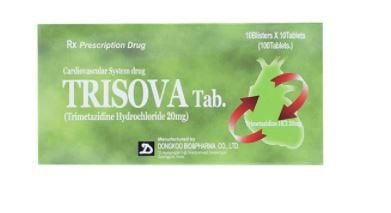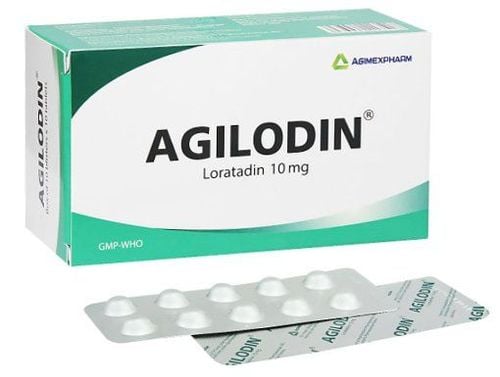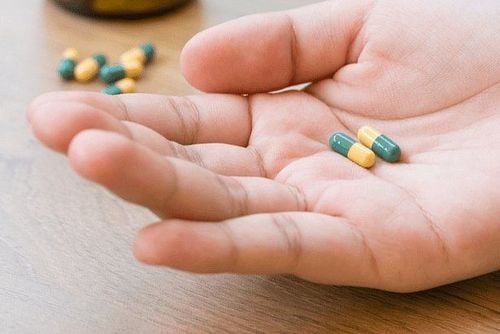This is an automatically translated article.
Lorastad drug is used to treat allergic rhinitis such as, allergic conjunctivitis, urticaria and allergic skin disorders, ... What does Lorastad drug work, how to use, let's find Understand the use of Lorastad 10mg through the article below.
1. Uses of Lorastad 10mg
What does Lorastad do? Lorastad tablets contain 10mg loratadine as the main ingredient. Lorastad is indicated for the treatment of allergic symptoms, including rhinitis and chronic urticaria.1.1 Indications For rapid treatment of histamine-releasing diseases such as allergic rhinitis, allergic conjunctivitis, urticaria, pruritus and other skin allergy symptoms. Stops sneezing in uncontrollable bursts Relieves itchy and runny nose Relieves feeling of itchy, watery, red eyes with no known cause Itching, skin discomfort. In particular, the ability to act in the body of Lorastad 10mg is very high, so patients will quickly reduce symptoms when they just take the drug. 1.2 Dosage - How to take Lorastad 10Mg How to use:
Lorastad is taken orally.
Dosage:
Adults and children ≥ 12 years old: 10mg x 1 time/day.
Children from 2 to 12 years old:
Body weight > 30kg: 10mg x 1 time/day. Body weight < 30kg: 5mg x 1 time/day. Note: The above dosage is for reference only. The specific dose depends on the condition and the progression of the disease. To get the right dose, you need to consult your doctor or healthcare professional.
1.3 Missed dose, overdose and treatment Overdose:
Do not exceed the prescribed dose. Taking more medication will not improve your symptoms; instead they can cause poisoning or serious side effects. If you suspect that you or someone else may have overdosed on Lorastad please go to the emergency room at your nearest hospital or care facility. Bring the box, cover, or label of the medication with you to help the doctor get the information he or she needs.
Symptoms of overdose
Adults: Drowsiness, tachycardia and headache (dose 40 - 180mg loratadine). Children: Extrapyramidal manifestations and palpitations (in excess of 10 mg). Management
Treatment of an overdose of loratadine normally consists of symptomatic and supportive treatment, initiated immediately and maintained as long as necessary.
Missed dose:
In case of acute loratadine overdose, the stomach should be emptied immediately using syrup of ipeca to induce vomiting. Oral administration of activated charcoal after induction of vomiting may effectively block the absorption of loratadine. If emesis is ineffective or contraindicated (eg, in comatose patients, in convulsion), gastric lavage with 0.9% NaCI solution may be performed if an endotracheal tube is available to prevent endotracheal intubation. inhalation of gastric contents. Salt bleaches act to rapidly dilute the contents of the intestines.
Treatment:
If you forget a dose, take it as soon as possible. However, if it is almost time for your next dose, skip the missed dose and take your next dose at the scheduled time. Do not take twice the prescribed dose.
2. Side effects of Lorastad 10Mg
When using Lorastad, you may experience unwanted effects (ADRs). Some of the side effects reported in human studies with this drug are: Severe ventricular arrhythmias that have occurred with treatment with some 2nd generation H1 receptor antagonists. That did not appear with treatment. with loratadine.
When loratadine is used in doses greater than 10mg daily, the following side effects may occur: Common:
Neurological: Headache. Digestion: Dry mouth. Uncommon:
Nervous: Dizziness. Respiratory: Dry nose and sneezing. Other: Conjunctivitis. Rare:
Neurological: Depression . Cardiovascular: Tachycardia, supraventricular tachycardia, palpitations. Gastrointestinal: Nausea. Metabolism: Abnormal liver function, irregular menstruation. Other: Exanthema, urticaria and anaphylactic shock.
3. Note when taking Lorastad 10Mg
Contraindications
Patients with hypersensitivity or allergy to any ingredient of the drug. Children ≤ 2 years old. Caution when using drugs
Caution when using loratadine with people with liver failure.
When taking loratadine there is a risk of dry mouth, especially in the elderly, and an increased risk of tooth decay. Therefore, it is necessary to have good oral hygiene when taking loratadine.
Ability to drive and use machines
In clinical trials evaluating the ability to drive in patients taking loratadine, this ability was not impaired. However, patients should be aware that in rare cases somnolence may affect the ability to drive or use machines.
Pregnancy and breast-feeding
Pregnancy: The safety of loratadine preparations during pregnancy has not been established, therefore, use the drug only if the potential benefits outweigh the risks. out to the fetus.
Lactation: Because loratadine is excreted in human milk and because of the increased risk of antihistamines in children, especially in neonates and premature infants, a decision should be made whether to discontinue nursing or to discontinue use. medicine.
4. Drug interactions
Concomitant treatment with loratadine and cimetidine resulted in a 60% increase in loratadine plasma concentrations, because cimetidine inhibits the metabolism of loratadine. This has no clinical manifestations.
Concomitant treatment with loratadine and ketoconazole resulted in a 3-fold increase in loratadine plasma concentrations, due to inhibition of CYP3A4. This is not clinically apparent because loratadine has a wide therapeutic index.
Concomitant treatment with loratadine and erythromycin resulted in increased plasma concentrations of loratadine. A mean increase in loratadine AUC of 40% and AUC of descarboethoxyloratadine increased by an average of 46% compared with loratadine alone. On the electrocardiogram there was no change in the QTc interval. Clinically, no change in the safety of loratadine has been observed, and there have been no reports of sedation or syncope during treatment with this drug.
Storage
Should be stored at room temperature, away from moisture and light. Do not store in the bathroom or in the freezer. It should be remembered that each drug may have different storage methods. Therefore, you should carefully read the storage instructions on the packaging or ask the pharmacist. Keep medicine out of reach of children and pets.
Please dial HOTLINE for more information or register for an appointment HERE. Download MyVinmec app to make appointments faster and to manage your bookings easily.













